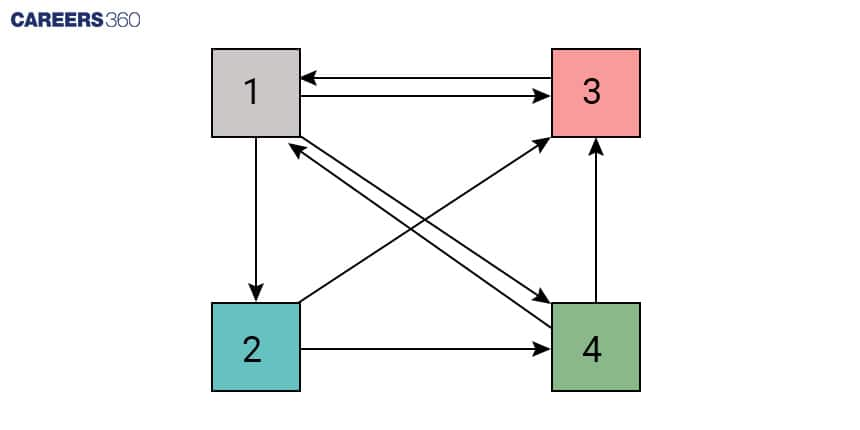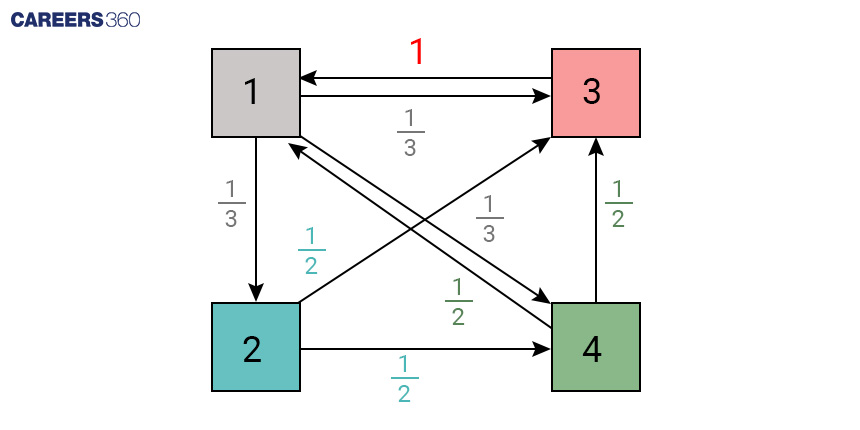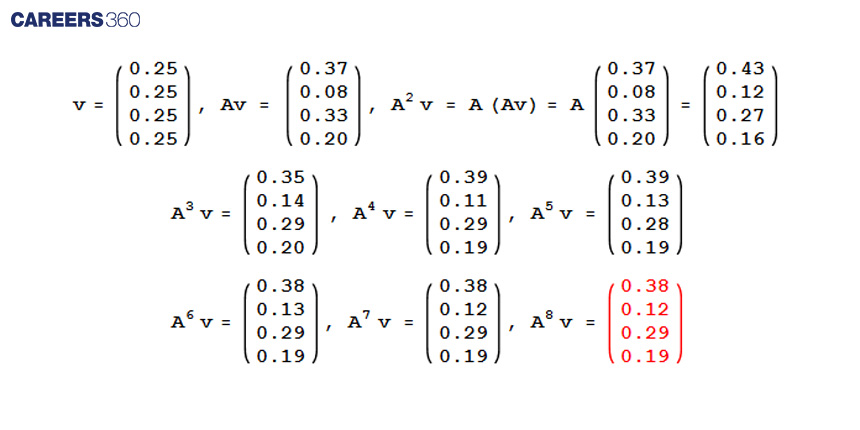What Is The Mathematics Behind The Google Search Results?
How does Google find the perfect answers when you search? Yes, you’ve heard the term algorithms. Right? In this article, we're diving into the mathematical concepts that help Google decide which pages to offer when you search. We'll explore concepts like PageRank Algorithms, Click-Through Rate, Dwell Time, Bounce Rate, as well as dive into topics like linear algebra, matrices, probability theory, and many other fascinating mathematical ideas.

Important Parameters Of Google Ranking
>> Relevance of Content: Google likes to show pages that match what someone is looking for. If you search for "best pizza," Google tries to find pages that talk about great pizza.
>> Quality and Depth of Content: Google prefers pages that are really helpful and explain things well. If a page gives lots of good information and answers questions thoroughly, it might rank higher.
>> Keywords and Search Terms: Google looks for words that match what people type into the search bar. It also understands similar words and how they fit into the writing.
>> Backlinks and Page Authority: When other websites link to a page, Google thinks that page is more trustworthy. Pages with lots of links from good websites might be seen as more important.
>> Freshness and Timeliness: Sometimes, new information is more helpful, especially for recent events or news. Google might show newer pages for things that just happened.
>> Page Structure and Metadata: Websites with clear titles, headings, and organised information are easier for Google to understand. When a page is set up well, Google can show it better in search results.
>> Local Relevance: For things like finding nearby stores or services, Google shows pages that are close to where you are. It's like finding a pizza place nearby when you search for "pizza."
>> Social Signals: Even though it's not the main thing, if people talk about a page on social media, Google might notice. Pages that get shared a lot could become more visible in searches.
>> Security and HTTPS: Google wants to keep people safe online. Websites with a little lock symbol in the address bar are safer. Google prefers these safer websites.
>> Content Formatting and Multimedia: Pages with pictures, videos, and clear writing might be more interesting. Google likes pages that look good and are easy to read.
>> Machine Learning and User Intent: Google uses fancy computer learning to understand what people really want. It tries to guess what someone means when they type something into the search bar.
>> Mobile Optimization: Google has made mobile optimization a key factor in its search algorithm, giving preference to websites that are mobile-friendly and responsive.
>> User Experience And Engagement: Google uses user signals such as CTR, Dwell Time, Bounce Rate and many other factors.
Click-Through Rate (CTR): It measures the percentage of people who click on a specific link out of the total who see it. If 100 people see a link in the search results, and 20 of them click on it, the CTR is 20%.
Dwell Time: It refers to how much time a user spends on a webpage after clicking on it from the search results before returning. If someone clicks on a search result, reads the content for 5 minutes, and then goes back to the search results, the dwell time is 5 minutes.
Bounce Rate: This measures the percentage of users who visit a webpage and then leave without interacting further. If 50 out of 100 visitors land on a page and leave without clicking or interacting, the bounce rate is 50%.
Pages that get more clicks (higher CTR), keep users engaged for longer (higher dwell time), and have fewer people quickly leaving (lower bounce rate) are seen as more relevant and useful. High engagement signals that users find the content helpful and relevant, leading Google to rank those pages higher in search results.
>> Natural Language Processing: Google uses natural language processing (NLP) to understand the meaning behind a user's query, which helps it to better match the query with relevant web pages.
PageRank Algorithms
Think of the internet like a map with web pages as places and the links between them as roads. Let's say we have just four websites: page1.com, page2.com, page3.com, and page4.com.

We turn this into a simple map with four spots, one for each website. When one website mentions or links to another, we draw an arrow between those spots on our map. We don't worry about buttons like "back" or "next" on the pages; we're only interested in the connections between the different websites.
Also check - Fun Maths Puzzles: Attempt These To Hone Your Number Skills
For example, if Page1 links to all the other pages, we draw lines from spot 1 to spots 2, 3, and 4 on our map. But if Page3 only links to Page1, we draw a line from spot 3 to spot 1.

Next, we want to figure out which spots are the most important. If a spot has lots of lines going out from it, it shares its importance equally among the spots it's linked to. So if spot 1 has three lines going out, it shares one-third of its importance with each of the other three spots. But if a spot only has one line going out, it gives all its importance to the spot it's linked to.

To make it simpler, we can give each line a number to show how much importance is shared. This helps us see which spots are more important based on how many lines they have and how much they share their importance with others.
Transition Matrix of the graph, A

Imagine at the beginning, each of the 4 spots on our map is equally important, like giving them each ¼ of the importance. Let's call this the starting importance, written as "v." Then, something interesting happens: when a spot gets more roads from other spots, it becomes more important.
So, at the first stage, we add up all the importance from the roads leading to each spot. It's like saying, "How many roads lead to this spot?" and then adding up all their importance to find out how important that spot is now. This can be written as "v1 = Av," showing how the importance changes after looking at the roads.
We can keep doing this again and again, making each spot more and more important based on the roads connected to it. For example, at the second stage, it's like asking, "Okay, now that we know the importance from the first round, how many roads lead to these spots?" This gives us a new importance, written as "v2 = A(Av) = A2v."

We see that as we keep doing the maths with v, Av, ..., all the way up to Akv, it gets closer to a final balanced value.

That is PageRank Vector.
The special Page Rank list we found tells us that page 1 is the most important. It might seem odd because page 1 has fewer links coming to it than page 3. But if we look closely at the map, we notice that page 3 only connects to page 1. This means all its importance goes straight to page 1. So, even though page 3 has more links, its importance all goes to page 1.
It's interesting because a page's importance isn't just about how many links come to it. It's like at first, a page gets votes from its close friends (the pages it links to). Then, in the next round, it gets votes from its friends' friends, and it keeps going like that.
Mathematics Used By Google
Concepts such as graph theory, linear algebra, probability theory, statistics, and many more are used by google. A few are discussed below.
Graph Theory
>> Directed Graphs: Representing web pages as nodes and links as edges to analyse the interconnected structure of the internet.
>> PageRank Algorithm: Assessing the importance of web pages based on their connections within the graph.
Linear Algebra
>> Matrices and Vectors: Representing relationships between web pages and calculating importance scores using matrix multiplication and vector operations.
>> Eigenvalues and Eigenvectors: Crucial in PageRank to determine the importance of nodes within the graph.
Probability Theory
>> Random Surfer Model: Using probabilities to simulate how a random user might navigate the web by following links.
>> Statistical Analysis: Analysing user behaviour and patterns to improve search algorithms.
Machine Learning
>> Neural Networks: Employing machine learning models to understand and predict user intent, enhancing search relevance.
>> Natural Language Processing (NLP): Improving understanding of search queries and content context.
Optimisation Techniques
>> Optimisation Algorithms: Refining search algorithms to ensure efficiency and accuracy in ranking.
>> Linear Programming: Utilising optimization methods for various search-related tasks.
Algorithmic Thinking
>> Algorithm Design: Creating efficient and effective algorithms to process and rank vast amounts of data.
>> Data Structures: Organising and managing data effectively for search-related operations.
Statistics
>> Data Analysis: Analysing patterns and trends in user behaviour to refine search algorithms.
>> Bayesian Inference: Predicting user intent based on previous information and interactions.
Number Theory
>> Cryptography: Implementing secure protocols and encryption methods for web security and user privacy.
Also check - How To Discover Averages In Mathematics?
Hope this helps you understand mathematics behind the google search results and other concepts such as pagerank algorithms, click-through rate, dwell time, bounce rate, and more.
Articles
Upcoming Exams
Application Date:11 November,2024 - 08 April,2025